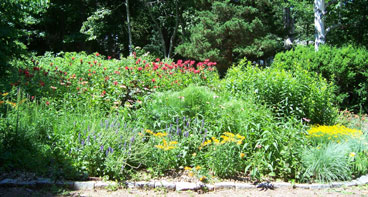Strawberries are one of the fruits that always appears on the "only eat organic" list because of the use of toxic fumigants used on the crop.
In a victory for environmentalists and farm workers, one of those fumigants is being pulled out of the US market.
Tokyo-based Arysta Lifescience, one of the largest pesticide producers in the world, is pulling methyl oidide, sold under the name "Midas," out of the US market.
The US EPA approved the chemical in 2007 despite opposition from over 50 scientists including five Nobel Loreates. The chemical was meant to replace ozone-depleting methyl bromide, which is being phased out under the Montreal Protocol and Clean Air Act.
Methyl iodide kills fungal pathogens and other soil organisms and is listed as a carcinogen in California. Although it has less impact on air quality than methyl bromide, it is much more dangerous to farm workers, and it seriously threatens contaminating groundwater.
A coalition of environmental and farm groups challenged its approval in Alameda County, California in a lawsuit. Arysta said it would pull out even before the court issued a decision. The company claims it made the decision for financial reasons, not because of public concern (god forbid!).
Conventional growers have been very slow in adopting the fumigant because of fears of being sued and because it’s more expensive and requires a larger buffer zone between farms and residential areas than other fumigants.
Organic strawberry growers avoid the need to fumigate by establishing a good rotation of crops. The fields do best if strawberries are grown every third year, and there is a vegetable crop, cover crop, and/or a rotation of raspberries for several years.
While the yield is often somewhat less for organic strawberries, the flavor is superior. Organic methods preserve soil heath and biodiversity, sequest carbon and protect the health of farm workers.
A research team at Lund University has found that organic farming improves pollination success and the proportion of fully pollinated berries in strawberries.
The California Strawberry Commission, with a $500,000 grant from the state’s Dept of Pesticide Regulation, is researching ways to grow strawberries without soil using rice hulls and coconut fiber, and methods for killing pests without synthetic fumigants, such as with steam, concentrated sunlight and mustard seeds.
In related news, US Representative Keith Ellison (D-MN) introduced legislation to ban atrazine, the most prevalent
herbide in the state’s waters. It is used nationwide to kill broadleaf and grassy weeds, primarily in corn crops.
The US Geological Survey finds atrazine in 75% of stream water samples and 40% of groundwater near agricultural areas. Research shows it is harmful to mammals, amphibians and humans even if used in doses under that allowed by government.
And a strong connection between synthetic nitrogen fertilizer has been found to climate change. University of Berkeley chemists have proved that increased use is responsible for a large rise in atmospheric nitrous oxide, a major greenhouse gas. The study is reported in the April issue of Nature Geoscience.
Bee Colony Collapse, where adult bees abandon their hives, has been strongly linked to the widely used pesticide imidaclopid. Introduced in the early 1990s, bees are exposed to the chemical through the nectar they eat from plants and through high fructose corn syrup beekeepers feed them. Researchers find it takes just small amounts to cause hive collapse.
Another cause of shrinking populations of pollinators, especially native bees, down 96% for some species in the past 20 years – is loss of habitat. Their geographic range is 87% smaller because farms no longer have wildflowers and surburban homes and malls have taken the place of prairies and other wildlands.
What would help a lot is every home had a wildflower garden filled with native plants that attract and feed native bees, butterflies and hummingbirds. Monoculture farms don’t help pollinators because they need food all year.
Here’s a photo of my meadow! Actually looks much more beautiful than this.

++++
Excerpted from The Organic Report, a member newsletter of the Organic Trade Association.
Here’s the 2012 "Dirty Dozen" fruits and vegetables and the "Clean 15."
